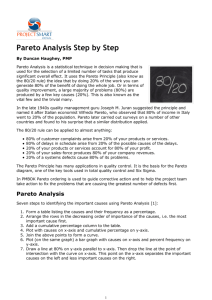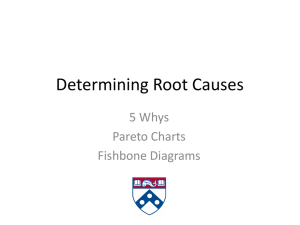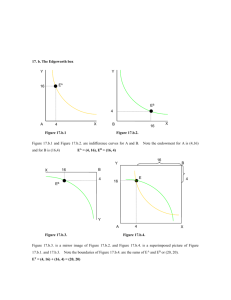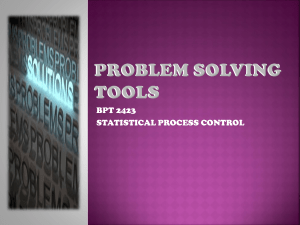Pareto Analysis Step by Step
advertisement
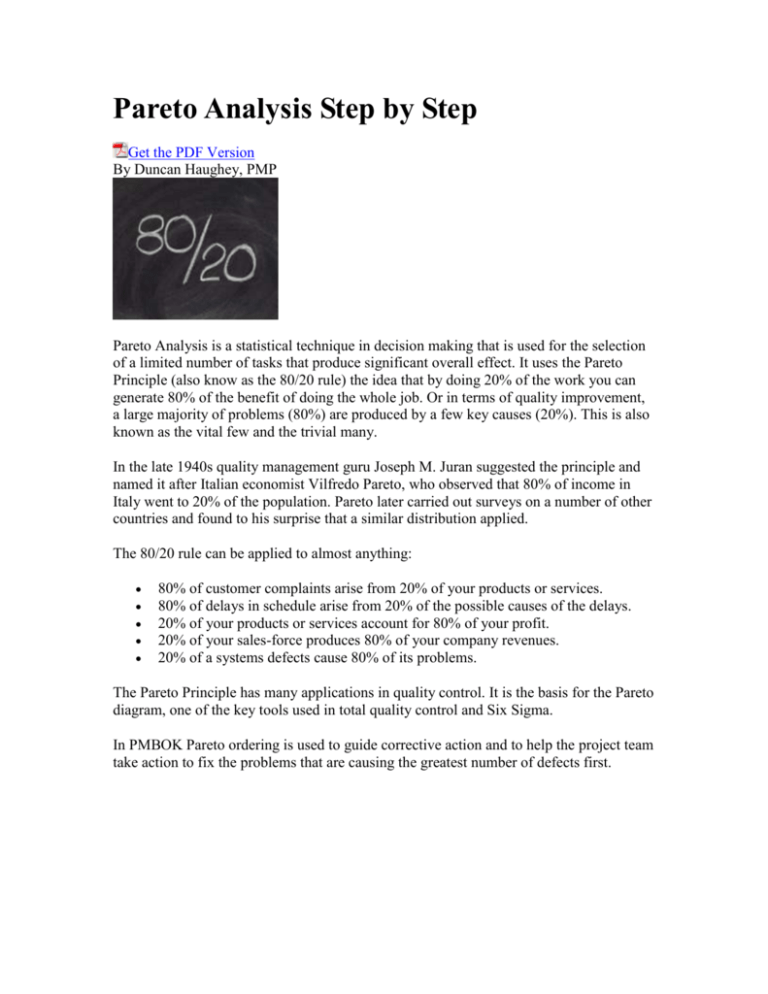
Pareto Analysis Step by Step Get the PDF Version By Duncan Haughey, PMP Pareto Analysis is a statistical technique in decision making that is used for the selection of a limited number of tasks that produce significant overall effect. It uses the Pareto Principle (also know as the 80/20 rule) the idea that by doing 20% of the work you can generate 80% of the benefit of doing the whole job. Or in terms of quality improvement, a large majority of problems (80%) are produced by a few key causes (20%). This is also known as the vital few and the trivial many. In the late 1940s quality management guru Joseph M. Juran suggested the principle and named it after Italian economist Vilfredo Pareto, who observed that 80% of income in Italy went to 20% of the population. Pareto later carried out surveys on a number of other countries and found to his surprise that a similar distribution applied. The 80/20 rule can be applied to almost anything: 80% of customer complaints arise from 20% of your products or services. 80% of delays in schedule arise from 20% of the possible causes of the delays. 20% of your products or services account for 80% of your profit. 20% of your sales-force produces 80% of your company revenues. 20% of a systems defects cause 80% of its problems. The Pareto Principle has many applications in quality control. It is the basis for the Pareto diagram, one of the key tools used in total quality control and Six Sigma. In PMBOK Pareto ordering is used to guide corrective action and to help the project team take action to fix the problems that are causing the greatest number of defects first. Pareto Analysis Seven steps to identifying the important causes using Pareto Analysis: ¹ 1. Form a table listing the causes and their frequency as a percentage. 2. Arrange the rows in the decreasing order of importance of the causes, i.e. the most important cause first. 3. Add a cumulative percentage column to the table. 4. Plot with causes on x-axis and cumulative percentage on y-axis. 5. Join the above points to form a curve. 6. Plot (on the same graph) a bar graph with causes on x-axis and percent frequency on y-axis. 7. Draw a line at 80% on y-axis parallel to x-axis. Then drop the line at the point of intersection with the curve on x-axis. This point on the x-axis separates the important causes on the left and less important causes on the right. This is a simple example of a Pareto diagram using sample data showing the relative frequency of causes for errors on websites. It enables you to see what 20% of cases are causing 80% of the problems and where efforts should be focussed to achieve the greatest improvement. The value of the Pareto Principle for a project manager is that it reminds you to focus on the 20% of things that matter. Of the things you do during your project, only 20% are really important. Those 20% produce 80% of your results. Identify and focus on those things first, but don't totally ignore the remaining 80% of causes.



